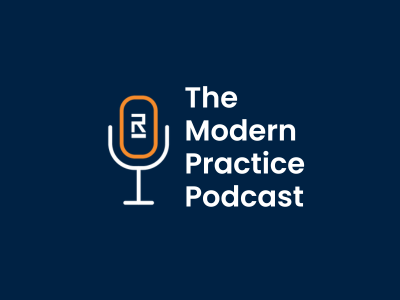As we’ve catapulted into a new year, technology aims to overcome emerging healthcare challenges with automated processes aligned to digital unification. Unifying data and workflows digitally through technology serves as a lifeline for healthcare practices and organizations struggling with labor challenges.
Healthcare is hurting and the pressure is unrelenting. According to Galvin, when referencing a recent survey’s results, “Since February 2020, 30% of U.S. health care workers have either lost their jobs (12%) or quit (18%), while 31% of those who kept them have considered leaving their employers during the pandemic. That includes 19% who have thought about leaving the health care field entirely” (Galvin, 2021). Like its patients, the healthcare industry needs relief from the strain that it has had to endure. Automation-oriented features found in healthcare technology platforms can offer an antidote to these stressors that have resulted in unprecedented labor shortages in healthcare, by freeing up staff from manual administrative activities that consume their time and challenge their current resources.

The Benefits of Automation
As many healthcare organizations continue to see the benefits of automation, adoption is projected to skyrocket. According to Eddy, when discussing a recent survey, “Nearly eight in 10 (78%) health systems currently using or in the process of deploying automation in their revenue cycle operations” (Eddy, 2021). There are several improvements that automation can make during all stages of care without sacrificing the human touch that makes delivering healthcare so compassionate. Here are ways our clients benefit from modernized patient payments and communications:
- Patient financing: Offering patients the payment plans they seek benefits practices as well. As expenses increase and insurance coverage wanes, patient financing options show deep understanding for all types of financial situations. Healthcare technology platforms can automate these charges for balances owed, pre-authorizing charges up to an agreed-upon amount for a reliable stream of patient payments. As more practices realize the value of payment plans, adoption of recurring payment plans can only increase.
- Text-to-Pay: Making use of the customized text messages to communicate with patients about payment reminders, practice notifications, and other forms of outreach is often more likely to elicit a response than traditional mail or follow-up phone calls. Communications can be personalized based on a message’s recipient and intent. Because these communication methods are so effective, potentially uncomfortable payment conversations at the front desk can be handled efficiently through email and text.
- Contactless options: Reducing physical contact at the front desk is essential as COVID-19 continues. Offices have responded to this by transforming their setups even further, employing the latest touchless payment technology and removing unnecessary payment submission equipment. Minimal and functional, these types of offices are likely to become more present in healthcare in the coming year.
- Digital payments: Allowing patients to pay online and through their mobile devices gives them the ability to pay whenever, wherever is most convenient. The capability of accepting payments from digital wallets and mobile wallet applications like Apple Pay®, Google Pay™, and Samsung Pay® aligns with today’s digitally connected patient’s needs and desire to move conveniently through the practice.
- QR codes: QR codes are back and bigger than ever thanks to the easy-to-use technology that makes contactless encounters possible. Practices can create a QR code in which patients can scan with their smartphone’s camera and go straight to your online payment site. QR codes allow for fast payment turn-around and on-time payments for the office, while offering a convenience that your patients will appreciate.
Today’s patient is looking for a user-friendly, digital experiences to complement their healthcare visits. From the perspective of the practice, the advantages of administrative automation are ease, efficiency, and growth. Coupled with mutually beneficial contactless capabilities, from Text-to-Pay to QR codes, digital unification is designed to improve productivity and increase productivity at the office. Now, sophisticated healthcare software solutions help to address the pain points of the office manager, making it easier for practices to schedule more appointments, communicate better with patients, conveniently collect payments, and focus on higher quality care. Best of all, automating these historically manual processes actually save time, money, and effort over time, while facilitating a more compassionate patient experience. Automation is here to stay ─ as a process improvement that requires fewer people to overcome obstacles in the office ─ serving as a bridge to empathy. As the healthcare industry continues to face new challenges, digital unification will bring together data from disparate sources and streamline systems into a seamless ecosystem for the betterment of all.
Practice Management Bridge® puts you on a path toward unification
Rectangle Health’s flagship product, Practice Management Bridge®, unifies payment and engagement efforts in one solution. Interfacing with any practice management system, Practice Management Bridge is a multi-faceted solution that brings empathy to the healthcare payment process. This innovative platform includes features like Text-to-Pay, digital registration forms, contactless capabilities, online payments, Card on File, and automatic payment posting. This healthcare software solution modernizes your office and expedites workflows. Optimize and organize all your data into one ecosystem of proven solutions.
References
- Galvin, G. (2021, October 4). Nearly 1 in 5 Health Care Workers Have Quit Their Jobs During the Pandemic. Morning Consult. Retrieved 1/14/2022, from https://pro.morningconsult.com/articles/health-care-workers-series-part-2-workforce
- Eddy, N. (2021, August 20). Use of automated healthcare revenue cycle operations grows. Mobi Health News. Retrieved 1/14/2022, from https://www.mobihealthnews.com/news/use-automated-healthcare-revenue-cycle-operations-grows



